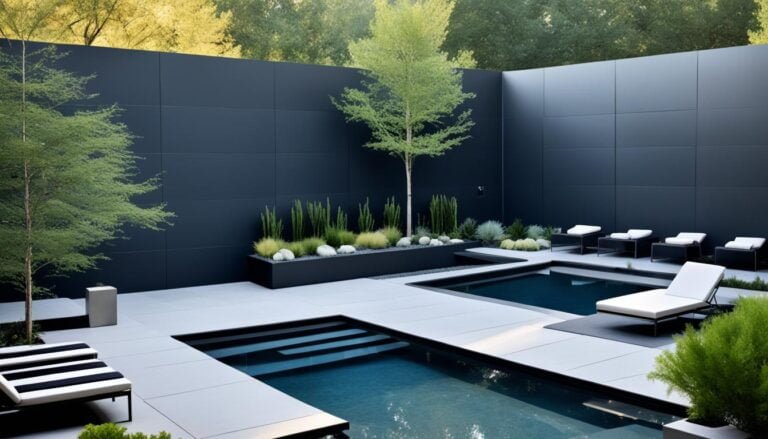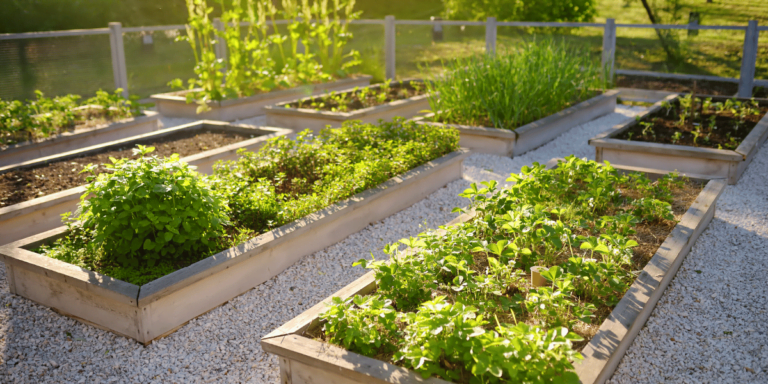Restorative garden ideas, gardening has long been recognized for its therapeutic benefits, promoting overall health and well-being. Creating a restorative garden can provide a rejuvenating and calming outdoor space that engages all the senses. From fragrant plants that soothe the mind to elements that invite contemplation and relaxation, there are numerous ways to transform your garden into a sanctuary of tranquility.
Imagine the scent of lavender filling the air, or the aromatic herbs like rosemary releasing their calming aroma as you brush past them. These fragrant plants offer a unique sensory experience that can help reduce stress and promote relaxation in your outdoor space.
Seasonality and movement are also essential in a restorative garden. Swaying grasses and rustling leaves create a sense of tranquility and connection with nature. Utilize elements like bamboo or ornamental grasses in your garden design to add movement and a touch of serenity.
Providing a designated seating area, such as a comfortable bench or a cozy hammock, allows you to fully immerse yourself in the restorative experience. Take a moment to sit, unwind, and enjoy the beauty of your garden.
Consider incorporating fire and water elements into your garden design. The flickering flames of a fire pit or the gentle sounds of a water feature can create a soothing and meditative ambiance, enhancing the overall restorative experience.
When it comes to the color palette of your garden, consider restraining it to shades of green. Green is known for its calming and soothing effect, creating a tranquil atmosphere that promotes relaxation and connection with nature.
A truly restorative garden should be inclusive and cater to everyone. Incorporate elements that engage both young and old, such as swing seats or stepping stones. By creating a space that invites exploration and enjoyment, you can ensure that your garden is a place of rejuvenation for all.
- Restorative gardens ideas engage the senses and promote relaxation.
- Include fragrant plants, like lavender and herbs, for their calming effects.
- Seasonality and movement, such as swaying grasses, enhance the restorative experience.
- Provide a place to sit and contemplate, like a bench or hammock.
- Incorporate fire and water elements for a soothing and meditative ambiance.
The Benefits of Therapeutic Gardens
Therapeutic gardens are designated outdoor spaces designed to improve physical and mental well-being. These gardens come in various types, each with its own unique focus:
- Healing gardens: These gardens employ horticultural therapy and utilize fragrant and colorful plants to facilitate healing and promote a sense of well-being.
- Enabling gardens: Enabling gardens aim to support physical recovery and can include vocational training within the horticultural industry.
- Meditative gardens: Meditative gardens provide a serene and stress-reducing environment, fostering deep thought, reflection, and relaxation.
- Rehabilitative gardens: These gardens benefit both individuals and the environment, with a focus on social and environmental healing.
- Restorative gardens: The primary goal of restorative gardens is to relieve stress and create a peaceful sanctuary for individuals experiencing trauma or PTSD.
All therapeutic gardens share common elements that contribute to their therapeutic nature:
- An easily defined perimeter to create a sense of security and enclosure
- Possibilities for human interaction, including seating areas and shared spaces
- Intentional placement of plants to evoke specific feelings and sensory experiences
- Sensory stimulation through the use of textures, scents, and sounds
- Accessibility for individuals of all ages and abilities
By incorporating these elements, therapeutic gardens can provide a haven for healing, relaxation, and emotional well-being.
Designing Your Therapy Restorative Garden Ideas

Before embarking on designing your therapy garden, it is essential to clearly define your goals and determine what you hope to achieve from this therapeutic space. Therapy gardens can have different focuses, such as restorative gardens that aim to provide mental peace and restoration, or rehabilitative gardens that enhance physical well-being and encourage interaction. Some therapy gardens combine elements of both restorative and rehabilitative designs to create a holistic healing environment.
When selecting the location for your therapy garden, choose a sunny and flat spot that receives ample sunlight throughout the day. This will ensure the plants in your garden thrive and provide the therapeutic benefits you seek. Additionally, easy access to water sources is vital for the well-being of your plants and the overall functionality of your therapy garden.
Consider incorporating seating areas in your therapy garden to facilitate meditation, relaxation, and reflection. These spaces can be adorned with comfortable benches, hammocks, or cushions where individuals can unwind and find solace in nature. Including elements that engage the senses can further enhance the therapeutic experience. Water features such as fountains or small ponds, wind chimes, or gentle rustling grasses can create a serene and calming ambiance.
Welcome wildlife into your therapy garden by adding bird feeders or selecting pollinator-attracting plants. Observing birds and butterflies can instill a sense of tranquility and connection to the natural world. Additionally, these creatures contribute to the overall biodiversity and harmony of your garden.
For ease of maintenance, it is important to select plants that suit your needs and abilities. Opt for low-maintenance varieties that align with the level of care you can provide. This will ensure that your therapy garden remains manageable and continues to flourish over time.
Designing Your Therapy Garden: Plant Selection Suggestions
| Plant Type | Plant Name | Suggested Benefits |
|---|---|---|
| Fragrant Plants | Lavender | Calming and stress-relieving properties |
| Rosemary | Promotes relaxation and memory enhancement | |
| Meditative Plants | Bamboo | Creates a tranquil and peaceful atmosphere |
| Colorful Plants | Marigold | Uplifts mood and adds vibrant hues to the garden |
Remember, the design of your therapy garden should be tailored to your specific needs and preferences. By considering your goals, selecting an optimal location, incorporating seating areas and sensory elements, welcoming wildlife, and choosing suitable plants, your therapy garden can provide the perfect environment for healing and rejuvenation.
Creating an Eco-Friendly Environment

Designing an eco-friendly therapy garden is essential for promoting sustainability. By incorporating sustainable gardening practices, renewable energy sources, green roof ecosystems, and biophilic design principles, you can create an eco-friendly therapy garden that benefits both the environment and its visitors.
Sustainable Gardening Practices
One of the key aspects of an eco-friendly therapy garden is the use of sustainable gardening practices. Implementing organic composting methods is an effective way to enrich the soil and reduce waste. By composting kitchen and garden scraps, you can create nutrient-rich compost that nourishes your plants without the need for synthetic fertilizers. This not only minimizes waste but also supports a healthy and thriving garden ecosystem.
Renewable Energy Sources
Integrating renewable energy sources into your therapy garden can further enhance its eco-friendly nature. Consider installing solar panels or wind turbines to harness the power of renewable energy. These energy sources can be used to power garden features such as water pumps, lighting systems, or even charging stations for electronic devices. By reducing dependence on traditional energy sources, you contribute to a cleaner and greener environment.
Green Roof Ecosystems
Creating green roof ecosystems in your therapy garden offers multiple benefits. Green roofs enhance biodiversity by providing habitats for various plant species, insects, and birds. They also act as natural insulation, reducing energy consumption by regulating temperature fluctuations in buildings. Additionally, green roofs help manage stormwater runoff, reducing the strain on municipal drainage systems. By incorporating green roofs, you not only contribute to the overall sustainability of your garden but also help mitigate the effects of urban heat islands.
Biophilic Design Principles
Embracing biophilic design principles in your therapy garden contributes to its eco-friendliness and creates a connection with nature. Incorporate natural materials and textures, such as wooden benches or stone paths, to promote a sense of organic harmony. Maximize natural light by strategically placing garden elements and creating openings in structures to allow sunlight to filter through. Integrating indoor and outdoor spaces, such as a glass-enclosed conservatory or a garden room, enhances the overall experience and blurs the boundaries between the natural and built environments.
In conclusion, creating an eco-friendly therapy garden involves incorporating sustainable gardening practices, utilizing renewable energy sources, implementing green roof ecosystems, and embracing biophilic design principles. By adopting these practices, you can create a harmonious and sustainable outdoor space that promotes well-being while minimizing its impact on the environment.
Space-Efficient Gardening Techniques
Space-efficient gardening techniques are a practical solution for maximizing your planting area, especially in urban environments or limited outdoor spaces. These techniques allow you to cultivate a wide variety of plants without compromising on space. Let’s explore some space-efficient gardening methods that can transform your small or urban garden into a green oasis.
Vertical Gardening
Vertical gardening is a popular technique that utilizes vertical wall space to grow plants. By going vertical, you can effectively increase your planting area without expanding horizontally. Whether you use trellises, hanging baskets, or wall-mounted planters, vertical gardening allows you to create a lush garden that adds visual interest to your space. It’s a great way to grow herbs, flowers, and even some vegetables.
Urban Permaculture Practices
Urban permaculture practices are designed to create self-sustaining ecosystems within small spaces. This approach focuses on a combination of techniques, including companion planting and water conservation. Companion planting involves strategically planting compatible plants together to maximize space and enhance the overall health of the garden. Water conservation techniques, such as mulching and rainwater harvesting, play a vital role in urban permaculture, ensuring efficient use of water resources while promoting plant growth.
Indoor Hydroponic Systems
Indoor hydroponic systems offer a convenient solution for growing plants without soil. These systems use nutrient-rich water and artificial lighting to provide an optimal growing environment. Hydroponics allows for precise control over growing conditions, resulting in faster growth and higher yields compared to traditional gardening methods. With indoor hydroponics, you can grow a variety of crops, including leafy greens, herbs, and even small fruits throughout the year, regardless of the outdoor climate.
These space-efficient gardening techniques open up a world of possibilities for urban and small-space gardeners. Whether you choose to go vertical with your plant arrangements, embrace urban permaculture practices, or delve into indoor hydroponics, these methods enable you to create a thriving garden in even the most space-constrained environments.
Incorporating Innovative Water Conservation Techniques
Water conservation techniques are crucial for maintaining sustainable gardening practices. By adopting water-wise gardening principles and implementing innovative techniques, you can reduce water consumption while ensuring the long-term health and vitality of your garden.
1. Drought-Tolerant Plants
One effective way to conserve water in your garden is by selecting drought-tolerant plants. These plants have adapted to survive in arid conditions and require less water compared to traditional garden plants. By incorporating a variety of drought-tolerant plants, you can create a vibrant and resilient garden that thrives even with minimal watering.
2. Efficient Irrigation Systems
Installing efficient irrigation systems is another key aspect of water-wise gardening. Drip irrigation and smart sprinkler systems are excellent choices as they deliver water directly to plant roots, minimizing water waste. These systems also offer options for automated scheduling, ensuring that your plants receive the right amount of water at the appropriate times.
3. Rainwater Harvesting
Rainwater harvesting is an innovative technique that allows you to collect and store rainwater for use in your garden. By installing rain barrels or underground cisterns, you can capture rainwater from your roof or other surfaces. This harvested rainwater can then be used to irrigate your garden during dry periods, reducing reliance on treated tap water.
4. Mulching
Mulching is an effective method of conserving moisture in the soil. By applying a layer of organic mulch, such as wood chips or straw, around your plants, you can reduce evaporation and regulate soil temperature. Mulch also helps to suppress weeds, further conserving water by minimizing competition for moisture.
Implementing these innovative water conservation techniques in your garden not only benefits the environment but also saves you time and money in the long run. By embracing water-wise gardening practices, you can create a sustainable and thriving garden while minimizing water waste.
| Water Conservation Techniques | Benefits |
|---|---|
| Drought-Tolerant Plants | – Require less water – Thrive in arid conditions – Reduce water consumption |
| Efficient Irrigation Systems | – Minimize water waste – Deliver water directly to plant roots – Automated scheduling options |
| Rainwater Harvesting | – Reduce reliance on treated tap water – Utilize free and abundant rainwater – Minimize runoff and erosion |
| Mulching | – Retain soil moisture – Regulate soil temperature – Suppress weed growth |
Conclusion
Restorative gardens ideas offer a serene sanctuary that promotes relaxation, healing, and a deep connection with nature. By engaging all the senses, providing spaces for contemplation and relaxation, incorporating elements of fire and water, curating a restrained color palette, and ensuring inclusivity, you can transform your outdoor space into an eco-friendly haven of tranquility. Therapeutic gardens, including healing, enabling, meditative, rehabilitative, and restorative gardens, offer a myriad of benefits for physical and mental well-being.
When designing your therapy garden, it is essential to identify your goals and select the type of therapy garden that suits your needs. Consider the location carefully, ensuring a sunny spot with easy access to water. Thoughtful selection of elements and plants that enhance the therapeutic experience is crucial. Creating an eco-friendly environment through sustainable gardening practices, space-efficient techniques, and innovative water conservation methods further contributes to the overall well-being of your garden and the environment.
By following these restorative garden ideas, you can create a rejuvenating outdoor space that fosters relaxation and a profound connection with nature. Take the opportunity to design a retreat where you can find solace, heal, and experience the transformative power of nature in your own backyard.
FAQ
What are some restorative garden ideas to rejuvenate my outdoor space?
Restorative garden ideas include engaging the senses, creating a place to sit and contemplate, incorporating fire and water elements, restraining the color palette, and making the garden inclusive for everyone.
What are the benefits of therapeutic gardens?
Therapeutic gardens offer numerous benefits for physical and mental well-being. There are different types of therapeutic gardens, including healing gardens, enabling gardens, meditative gardens, rehabilitative gardens, and restorative gardens.
How do I design my therapy garden?
When designing a therapy garden, it’s important to identify your goals and what you hope to gain from the space. Consider whether you want a restorative garden, a rehabilitative garden, or a combination of both. Choose a suitable location, and consider the elements and plants that will enhance the therapeutic experience.
How can I create an eco-friendly therapy garden?
Creating an eco-friendly therapy garden involves incorporating sustainable gardening practices such as composting methods, using renewable energy sources, creating green roof ecosystems, and embracing biophilic design principles.
What are some space-efficient gardening techniques I can use?
Space-efficient gardening techniques include vertical gardening, urban permaculture practices, and indoor hydroponic systems. These techniques allow for gardening in small or urban spaces.
How can I incorporate innovative water conservation techniques in my garden?
To incorporate innovative water conservation techniques, you can select drought-tolerant plants, install efficient irrigation systems, such as drip irrigation or smart sprinkler systems, and consider rainwater harvesting.
What restorative garden ideas would you suggest?
Restorative garden ideas include engaging the senses, creating a place to sit and contemplate, incorporating fire and water elements, restraining the color palette, and making the garden inclusive for everyone.










